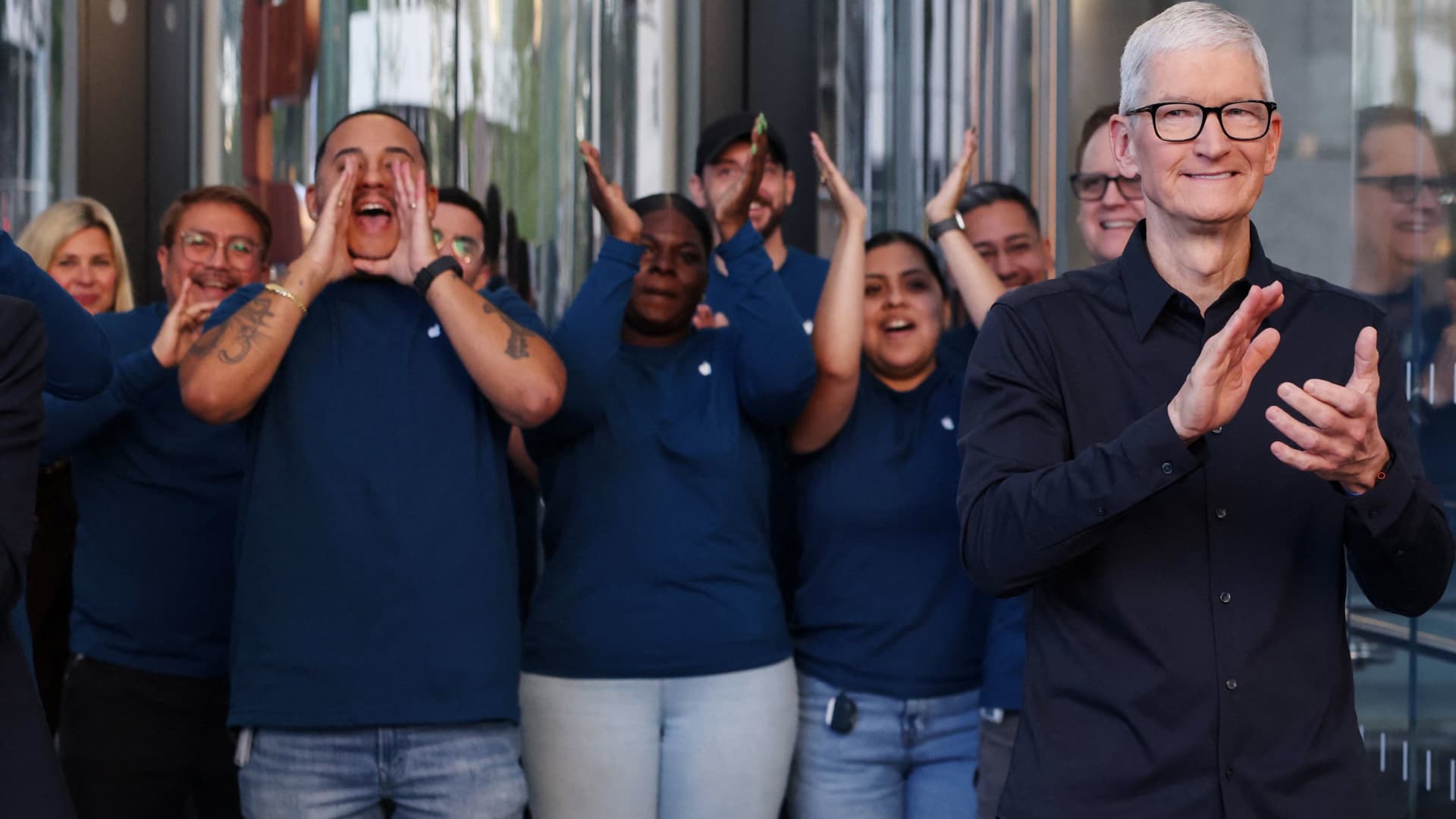Biopharma has finally begun catching up with the overall stock market, if the positive returns shown by the top three exchange traded funds (ETFs) since the spring are any indication.
Over the past six months, shares of the top three biopharma ETFs have jumped well into double digits. The top biotech-focused ETF with $6.562 billion in assets, the SPDR S&P Biotech ETF (NYSE Arca: XBI) has jumped 34%, from $80.89 on April 24 to $108.38 at Friday’s closing bell. iShares Biotechnology ETF (NASDAQ: IBB), the second-largest biotech fund with $6.419 billion in assets, has risen 25%, from $124.20 to $155.16.
Faring best of the three top ETFs is the ARK Genomic Revolution ETF (NYSE Arca: ARKG), which has $1.288 billion in assets. ARKG soared 42% from $22.45 to $31.88 Friday. ARKG is overseen by ARK Investment Management (ARK Invest), the high-profile firm led by chief investment officer and portfolio manager Catherine D. (Cathie) Wood.
All three biotech ETFs outperformed the S&P 500® (SNP: ^GSPC), which has grown 24% since April, rising from $5,484.77 to $6,791.73 on Friday. The S&P 500 consists of 500 leading large-capitalization companies covering approximately 80% of available market capitalization across a variety of industries.
But as good as the returns for top biopharma ETFs have been over the past six months, two of the three top funds continue to lag behind where they were five years ago. Since October 24, 2021, XBI has dropped 7.7% and ARKG has tumbled 54.5%, though IBB has actually risen 14%.
“We have some momentum.”
“I actually would argue that’s a good thing. We have some momentum. We’re not at a point where it’s irrational exuberance,” Brian P. Skorney, a senior research analyst covering biotechnology for Baird, said earlier this month in a BiotechTV interview with the life-sci media company’s founder Brad Loncar—who joined his “Biotech Hangout” podcast co-hosts in discussing the market during GEN’s recent flagship virtual event “The State of Biotech 2025.”
“That’s not to say we’re going to catch up with the S&P in a very quick timeframe over a five-year period, but I think there’s a lot of room to go. I’m pretty optimistic,” Skorney said.
The differences between the funds reflect their investment approaches and especially the differences in the funds’ top holdings. XBI’s top holdings by weight are biotechs based on newer technologies: CRISPR Therapeutics (NASDAQ: CRSP), named for its namesake gene editing therapy approach; Revolution Medicines (NASDAQ: RVMD), which develops targeted therapies against RAS-addicted cancers; and Exact Sciences (NASDAQ: EXAS), a provider of cancer screening and diagnostic tests.
By contrast, IBB’s top holdings are biopharma giants focused on traditional drug development. The fund’s top three holdings as of Friday were Vertex Pharmaceuticals (NASDAQ: VRTX), followed by Gilead Sciences (NASDAQ: GILD) and Amgen (NASDAQ: AMGN).
ARKS stands out from IBB and XBI by investing in edgier biotechs. Its top three holdings as of Friday were led by AI-based precision medicine company Tempus AI (NASDAQ: TEM), then CRISPR Therapeutics, followed by gene editing therapy developer Intellia Therapeutics (NASDAQ: NTLA).
Perception of FDA stability
Andrew Tsai, equity analyst with Jefferies, has offered one key reason why XBI, at least, has jumped in recent months: A perception by investors that after weeks of turmoil marked by numerous exits of key administrators, the FDA has stabilized under its new leadership headed by Commissioner Martin A. Makary, MD; Vinayak (Vinay) Prasad, MD, director of the Center for Biologics Evaluation and Research (CBER), and George Tidmarsh, MD, PhD, Prasad’s counterpart at the Center for Drug Evaluation and Research (CDER).
“When you think about the FDA dynamics, sure, media headlines earlier in the year suggested maybe some dysfunction at the FDA. But we’ve maintained our view that things played out or seem fine. And in fact, we would argue that over the past three months, maybe the FDA news or dynamic or fears have subsided,” Tsai said on October 19 in a video research note.
The ebbing of those fears, Tsai explained, reflected investor confidence that the FDA seems to be functional in terms of activity, including complete response letters (CRLs), advisory committee or “adcomm” activity, meeting target decision dates under the Prescription Drug User Fee Act (PDUFA), and approvals.
“People are genuinely feeling comfortable with the FDA side for now, knock on wood,” Tsai added. “The key question investors have now is, do we retrace from here or do we want to chase from here?”
Skorney shared that optimistic view of the FDA’s changeover: “There were a lot of concerns that there was going to be a much lower rate of progress there. To some extent, that’s diminished too. I think there’s still a lot of chaos at the FDA, and that’s probably a source of picking out individual stocks. But it’s certainly not as bad as people maybe expected much earlier in the year.
“I think it’s hard to say we’re back, but I’m very encouraged by what we’re seeing,” he added.
Interest rates and pricing
Skorney cited two other reasons besides the FDA for investor optimism about biotech, reflected in rising prices for the industry’s top ETFs. For one, investors expect lower interest rates later this year—an expectation reinforced Friday when the U.S. Bureau of Labor Statistics released lower inflation numbers than expected, a 3% annual rate vs. the 3.1% predicted by market watchers.
“Interest rates are probably going to come down,” Skorney predicted. “That’s positive for a sector that has such a long development timeline. That’s been a major headwind the last couple of years with interest rates rising, so that’s a positive.”
Skorney also said industry fears about President Donald Trump’s “Most Favored Nation” approach to drug pricing have ebbed after the White House reached an MFN agreement with Pfizer on September 30. That was followed on October 10 by an MFN agreement with AstraZeneca.
The MFN agreements commit the drug developers to selling their drugs to Medicaid customers at reduced prices, and to building out billions of dollars ($70 billion by Pfizer, $50 billion by AstraZeneca) in U.S. manufacturing and R&D projects—aligning with Trump’s vision of reshoring drug production stateside.
In return, Trump’s administration granted the companies three-year “grace” or exemptions from tariffs on their products based on U.S. Department of Commerce investigations under Section 232 of the Trade Expansion Act of 1962 into whether drug imports by multinational biopharmas threaten national security.
“It seems like a lot of the concerns about drug pricing have diminished,” compared with earlier fears of a “harsh” MFN approach, Skorney said.
Diminished fears about drug pricing and especially interest rates have fueled speculation by investors that the pace of biotech mergers and acquisitions (M&A) will step up in coming months.
At deadline, the top M&A deal of 2025 was Eli Lilly (NYSE: LLY)’s $14.6 billion buyout of Intra-Cellular Therapies, whose stock ITCI was delisted upon completion of the transaction on April 2. However, biopharma has seen a growing number of M&A transactions since the spring. These include the second third, fourth, and fifth largest acquisition deals: Merck & Co. (NYSE: MRK)’s $10 billion purchase of Verona Pharma, announced in July; Sanofi (Euronext: SAN)’s up-to-$9.5 billion acquisition of Blueprint Medicines, made public in June; Pfizer (NYSE: PFE)’s up-to-$7.3 billion buyout of Metsera, announced on September 22; and Genmab (NASDAQ Copenhagen: GMAB)’s planned $8 billion acquisition of Merus, disclosed September 29.
According to a J.P. Morgan report on third-quarter biopharma activity based on DealForma data, 33 biopharma-to-biopharma M&A transactions were announced in Q3 2025, totaling $30.9 billion in upfront cash and equity—a figure larger than the combined dollar value of biopharma M&A deals in all of 2024.
Small-capitalization (small cap) biopharma stocks with market caps from $250 million to $2 billion, and mid-cap biopharmas with $2 billion to $10 billion in market cap, accounted for nearly 60% of total acquisitions through Q3, J.P. Morgan reported. Market cap is the product of the share price and the number of outstanding shares.
Leaders and laggards
- Adaptimmune Therapeutics (NASDAQ: ADAP) shares plunged 70.5% from 20 cents to 6 cents on October 20, after the company told Nasdaq it will voluntarily delist its American Depositary Shares (ADSs) and deregister them by filing a Form 25 with the U.S. Securities and Exchange Commission (SEC) on or about October 28. Adaptimmune said it expects its ADSs will be quoted on the OTC Pink Limited Market. The deregistration of the ADSs is expected to become effective 90 days after the date of filing of the Form 25. In July, Adaptimmune sold its marketed TCR T-cell therapy Tecelra® (afamitresgene autoleucel), clinical candidates afami-cel (targeting MAGE—A4), and lete-cel (NY-ESO), plus preclinical candidate uza-cel (ADP-A2M4CD8, targeting MAGE-A4) to US WorldMeds for an undisclosed price. The company continues to own two other preclinical candidates, ADP-600 (targeting PRAME) and ADP-520 (targeting CD70).
- Adverum Biotechnologies (NASDAQ: ADVM) shares slipped 2.6% from $4.18 to $4.07 on Friday after the developer of gene therapies for eye diseases said it is being acquired by Eli Lilly (NYSE: LLY) for up to $260 million, in a deal intended to bolster the buyer’s genetic medicine portfolio. Lilly was attracted to Adverum’s lead candidate ixoberogene soroparvovec (Ixo-vec), an intravitreal gene therapy for wet age-related macular degeneration designed as a one-time treatment. Developed using Adverum’s next-generation adeno-associated virus (AAV) vector platform, Ixo-vec has shown promising Phase I and II results and is now under study in the Phase III ARTEMIS trial (NCT06856577). The deal price includes $74 million upfront, plus additional payments tied to Ixo-vec achieving milestones such as FDA approval within seven years, and annual global sales exceeding $1 billion within 10 years. Lilly shares inched up 0.5% from $821.04 to $825.45.
- Arcturus Biotechnologies Holdings (NASDAQ: ARCT)shares plunged 50% from $23.16 to $11.54 Wednesday after the company acknowledged that its cystic fibrosis (CF) candidate ARCT-032 “did not demonstrate meaningful improvement” in an initial analysis comparing forced expiratory volume in 1 second (FEV₁) values from Day 1 to Day 28 in the Phase II LunairCF trial (NCT06747858) assessing the drug’s safety, tolerability, and efficacy. ARCT-032 applies Arcturus’ LUNAR® lipid-mediated aerosolized platform to deliver cystic fibrosis transmembrane conductance regulator (CFTR) protein messenger RNA (mRNA) to the lungs. Arcturus cited more positive interim data, however, showing improvements in lung function in four of six Class I CF participants with an average absolute increase of 3.8% and a relative increase of 5.1% in percent predicted FEV₁ (ppFEV₁)—data derived from a post hoc exploratory analysis comparing the average of two pre-treatment FEV₁ measurements (screening and Day 1) for the baseline with the Day 42 post-treatment value.
- Armata Pharmaceuticals (NYSE American: ARMP) shares more than doubled, leaping 103% from $3.47 to $7.05 on Wednesday after the company highlighted positive results from its recently completed Phase IIa diSArm trial (NCT05184764) assessing AP-SA02 as a potential treatment for complicated Staphylococcus aureus (S. aureus) bacteremia (SAB) in a late-breaking oral presentation at IDWeek 2025™. The trial enrolled and dosed 42 patients, with 29 randomized to AP-SA02 plus best available antibiotic therapy (BAT) and 13 to placebo (BAT alone). Of patients randomized to AP-SA02, 88% (21/24) showed positive clinical responses on Day 12 post-treatment, compared to 58% (7/12) in the placebo group as assessed by blinded site investigators. The trial’s blinded Adjudication Committee reported 83% of AP-SA02 patients (20/24) showed positive day 12 clinical improvement vs. 58% (7/12) of placebo patients. Clinical response was assessed in the intent-to-treat population on day 12, a week post-BAT, and end of the study, four weeks after BAT completion.
- Minerva Neurosciences (NASDAQ: NERV) shares more than doubled, skyrocketing 140% from $2.67 to $6.41 on Tuesday after the company secured up to $200 million intended to advance roluperidone through a Phase III confirmatory trial assessing the inhibitor of serotonin receptor 5-HT2A in patients with negative symptoms of schizophrenia, and resubmission of its New Drug Application (NDA) to the FDA. Minerva entered into a securities purchase agreement with institutional investors led by Vivo Capital, consisting of a private placement with initial upfront funding of $80 million in exchange for shares of the company’s Series A preferred stock, up to an additional $80 million upon exercise of all Tranche A warrants, and an additional $40 million upon exercise of all Tranche B warrants. Warrants are tied to achieving specified milestones. Upon completion of the private placement, the investors can appoint up to three directors with “significant” schizophrenia clinical trial experience to strengthen and support clinical operations management and the confirmatory trial, Minerva added.


